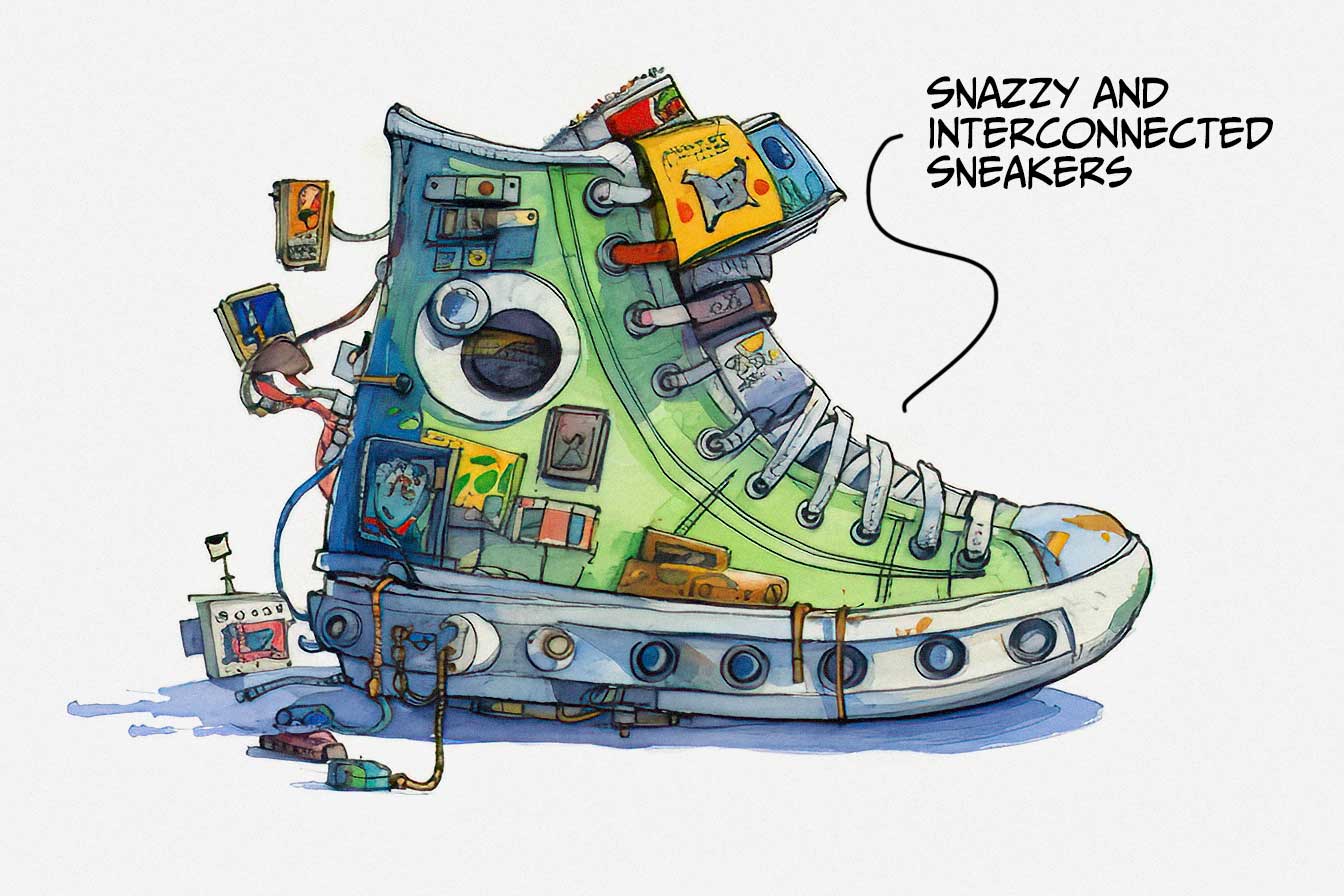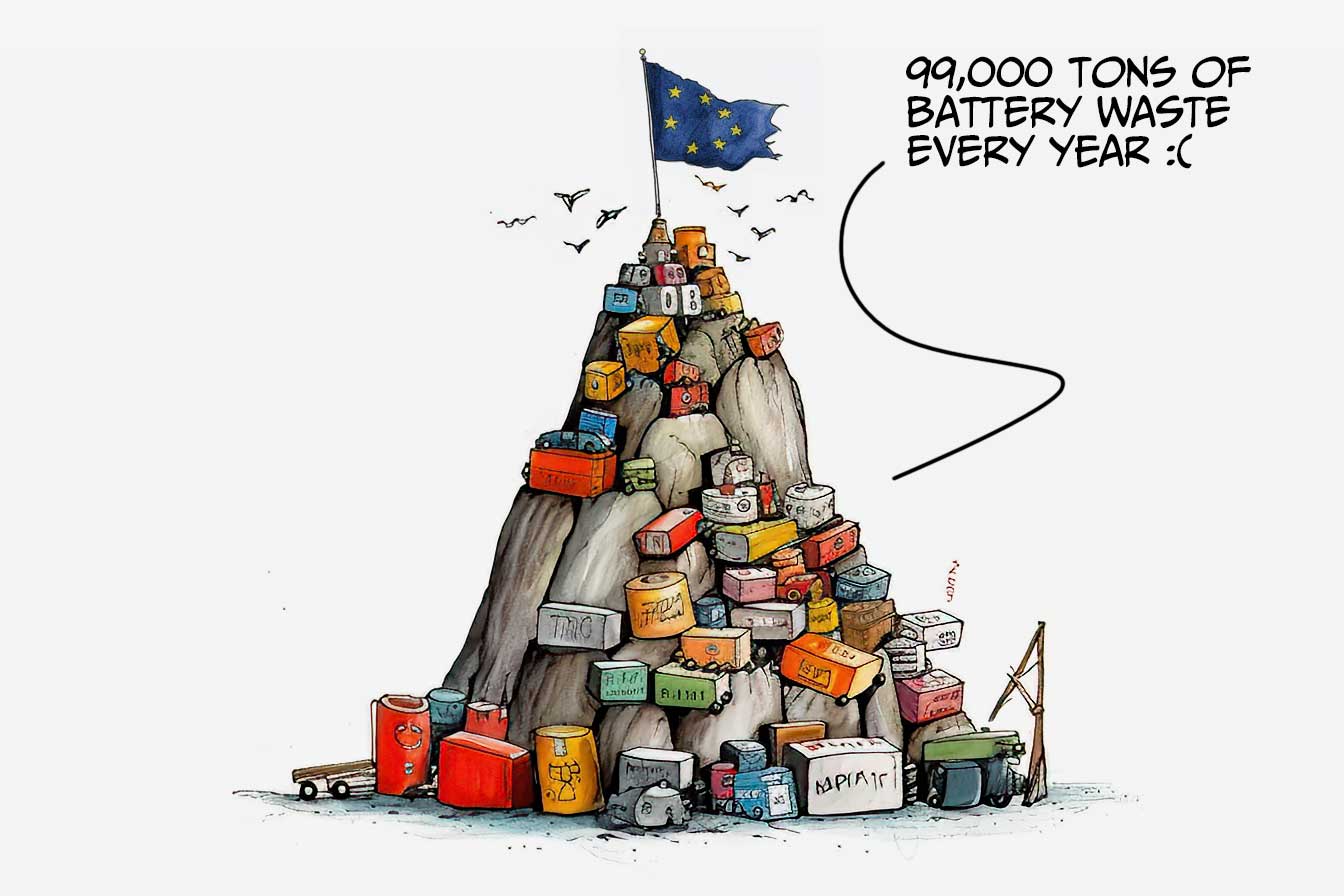IoT's Sustainable Future: The Rise of Batteryless Microcontrollers and Self-Powered Sensors


If you haven't noticed, the Internet of Thingamajigs (IoT) is creeping into every nook and cranny of our lives, flipping everything upside-down – from big ol' industries to our personal well-being rituals. It seems there isn't a single human endeavor that can escape the clutches of this IoT bonanza. But with all the awesome gadgetry comes a few worries – especially when it comes to our dear ol' planet. Could IoT gizmos contribute to the already looming eco-disaster we're grappling with? In this article, we'll peek into how nifty IoT advances like energy harvesting and battery-less micro-thingies are making IoT a greener buddy and laying the groundwork for a more eco-friendly IoT future.
To claim that technology is kind of a big deal in our lives would be the understatement of the century. From shaking us out of our slumber in the morning to tucking us in for some quality snooze time, and everything in between, tech has become our constant, inseparable companion.
Remember that time when the industrial revolution turned everything topsy-turvy and changed our lives forever? That was, like, 200 years ago. Well, we're now smack-dab in the middle of another revolution – the IoT extravaganza. And, even though industrialization has given us some headaches, it's tough to completely diss it – I mean, who doesn't love a cozy sofa, zippy cars, and snazzy smartphones? Tech makes our lives cushy, and let's face it, we humans can't resist a good dose of comfy.
Nowadays, the Internet of Things has gotten so ginormous that pretty much everyone's heard of it. Even if they don't know the nitty-gritty of how it all works, most folks get the basic idea that it's not just computers and tablets getting chummy with the internet anymore – it's your smarty-pants watch, your fridge, your shoes – heck, just about anything you can think of probably has some sort of internet connection.
Tech's come a long way, baby. We've seen it grow and evolve through the years, and now we've got super cool things like 5G, AI, ML, and IoT, all thanks to countless advancements building on one another.
The Internet of Thingamabobs: We're all connected now
The IoT has completely transformed how we see the internet. Nowadays, it's way more than just the World Wide Web. We're talking everything from your snazzy sneakers to your kitchen gizmos – they can all join the internet party.

We've created a world that's all chatty and interconnected. Today, we're able to mesh with reality like never before, blending the digital and physical realms in ways that would've made jaws drop not too long ago.
At its heart, the Internet of Things is all about communication and connectivity – a smooth flow of info that boosts efficiency and opens the door to a whole bunch of new possibilities.
Take a gander at the world around us, and it's plain to see that cutting-edge IoT gadgetry has turned it inside out.
These days, we can slap wireless sensors onto just about any object, letting it cozy up to the internet in real time.
IoT growing pains
Back in the early days of IoT, one of the biggest hurdles to getting this global IoT shindig off the ground was the power conundrum.
After all, those wireless sensors needed some juice to keep them going. Back then, plugging into the wall or relying on batteries were the only options in town. But let's be real, neither of those solutions were exactly the bee's knees.
And then there were the financial concerns. IoT sensors weren't quite the bargain they are today. The numbers just didn't make sense. Manufacturers and businesses weren't being wooed with a sweet enough deal.
Green quandaries and IoT
IoT's eco-friendly street cred was getting some serious side-eye – after all, this was the tech that was supposed to be our trusty sidekick in battling climate change and deforestation, among other urgent eco-crises.
IoT wouldn't be much of a hero if it turned out to be an environmental baddie itself – and you bet your boots it would've been a massive green nightmare if billions of IoT sensors worldwide were running on batteries.
That being said, a whole bunch of brainpower was being funneled into cooking up ultra-low-power sensors and super-duper energy-efficient batteries. But as things were unfolding, it was dawning on the IoT community that a battery-powered future just wasn't in the cards.
No-Batteries-Allowed IoT
Despite Band-Aid fixes like ultra-low-power sensors and fancy batteries, it was crystal clear that IoT's future had to ditch the batteries. If we were gonna make a world where every doohickey and doodad connected to the internet, we needed to whip up a more clever solution.
Enter stage right: batteryless microcontrollers and sensors powered by energy harvesting tech. These snappy little gizmos took all the old-school notions about IoT power solutions and chucked them out the window – energy harvesting was the new cool kid on the block.
Energy harvesting is all about scooping up tiny bits of ambient energy that would otherwise laze around, and turning it into bite-sized chunks of electricity. I mean, even the most high-tech IoT devices just needed a few milliwatts here and there.
Plus, there's no shortage of energy sources to pick from – there's a never-ending supply of energy dancing all around us, morphing from one form to another, just twiddling its thumbs. Thanks to our undying love for electronic gadgets – PlayStations, Wi-Fi routers, TVs, smartphones, you name it – we're swimming in a sea of radiofrequency waves. And that's where RF energy harvesting comes in, turning those waves into a power source.
But that's just the tip of the iceberg. The same idea can be applied to mechanical energy – vibrations from solid objects interacting with each other are everywhere, just waiting to be harnessed and transformed into electric juice. That's where piezoelectric energy harvesting steps in. Recently, they even embedded piezoelectric harvesters into pavements to capture the power of pedestrians' footsteps.
There's a whole bunch of other energy harvesting technologies making waves in the IoT world too. Triboelectric, solar, and pyroelectric energy harvesting are just a few standouts.
Batteryless microcontrollers ride the energy harvesting wave to kick batteries to the curb in IoT devices. Usually, they'll use one or more energy harvesting methods to do the trick – like a smarty-pants remote control powered by a batteryless microcontroller, which could tap into both RF energy harvesting and solar energy harvesting.
Greening up IoT, Battery-Free style
Our ecosystems are going haywire at a breakneck pace, and we can't just hit the snooze button. We're facing a major threat to life on this little blue dot. Thousands of species are vanishing quicker than you can say "extinct." Our soil's losing its mojo. The air we breathe and the water we drink are contaminated. We're barreling toward ecological disaster if we don't get our ducks in a row.
The need to shake ourselves awake and tackle this urgent issue hasn't gone unnoticed. More and more people are feeling the heat and getting fired up to make a difference. But channeling all that passion into cohesive, unified action? That's been a real doozy.
Enter the early days of IoT tech, and you've got folks worrying about whether this shiny new standard would be eco-friendly. After all, the first IoT devices were all about batteries, and with folks predicting a world of trillion sensors, there were growing concerns about the environmental fallout of a billion batteries in landfills. When energy harvesting tech stepped up as a battery-free alternative, you could practically hear the IoT world breathing a sigh of relief.
Batteryless microcontrollers are a giant leap toward making IoT sustainable and Mother Nature-approved. Batteries are a sustainability nightmare. For starters, making them sucks up a ton of resources. Most modern batteries need rare minerals like lithium and cobalt. Lithium mining wreaks havoc on the environment and drains local water supplies.
As for cobalt mining, it's mostly done by child miners in the Democratic Republic of Congo, a struggling African nation. Plagued by human rights violations, cobalt mining has faced some serious side-eye in recent years.

And if getting the ingredients for batteries weren't bad enough, there's the whole disposal issue. Right now, we're dealing with over 99,000 tons of battery waste every year (EU). Adding billions of coin cells to this unholy number? No, thank you. Batteries are toxic trash, and getting rid of them is a major headache.
So it's no wonder that batteryless microcontrollers and self-powered sensors have been welcomed with open arms.
Revving up sustainability
Batteryless microcontrollers are just one piece of the bigger eco-puzzle, with IoT tech being put to work to find planet-friendly fixes for some of our biggest environmental headaches. These days, we're seeing IoT being used in all sorts of ways to fight the green fight, like:
The final word
To sum it up, batteryless microcontrollers and energy harvesting tech have laid the groundwork for an IoT that's green as can be. As our world gets more and more connected and IoT keeps growing, we need to put the pedal to the metal on eco-conscious solutions. By tapping into the ambient energy that's all around us, we can steer ourselves and the planet toward a sustainable future.
As tech keeps changing, we've got to make sure it's in sync with our values of sustainability and eco-responsibility. With batteryless microcontrollers and energy-harvesting tech, we're already on the road to making that happen.












